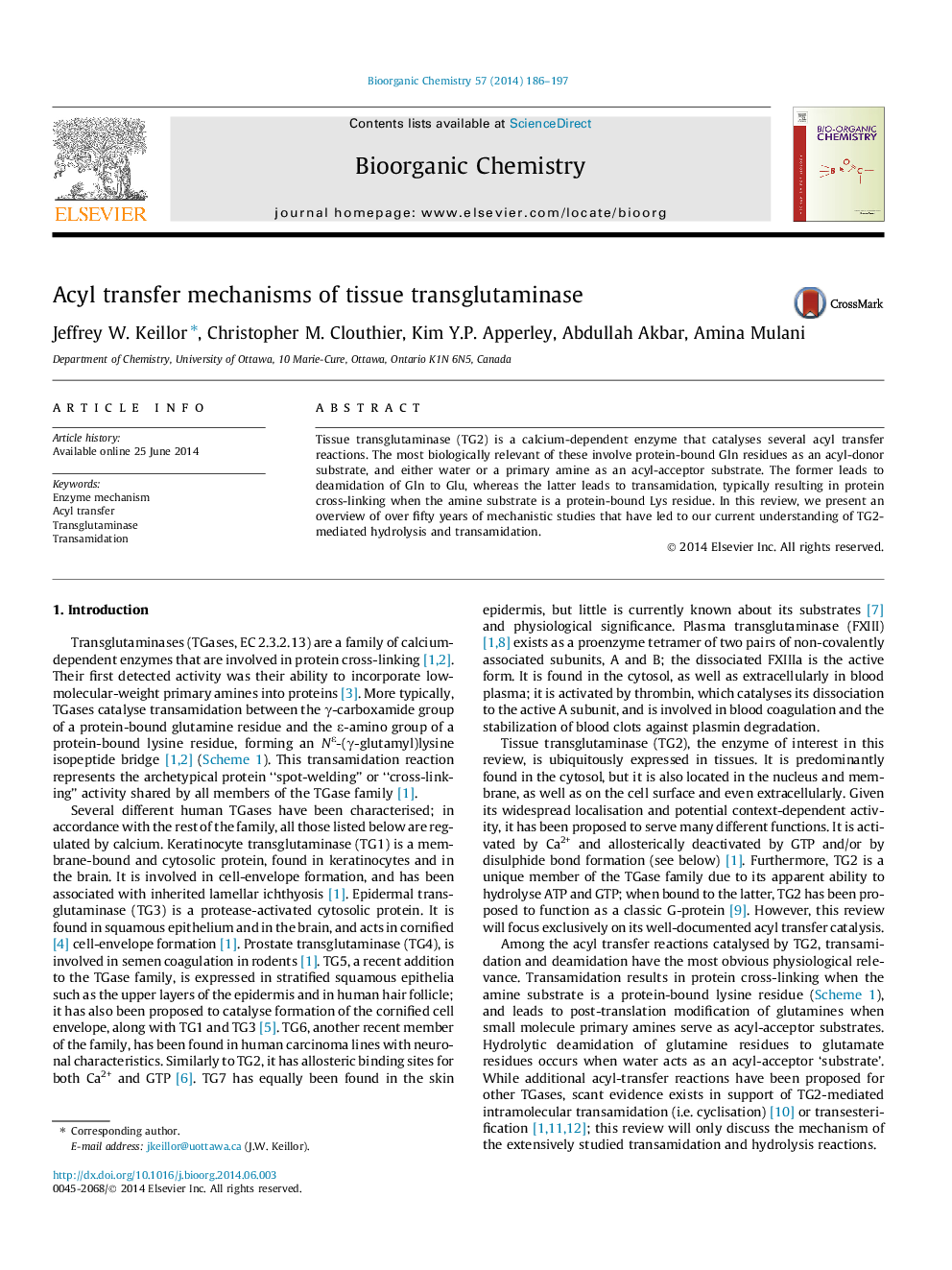| Article ID | Journal | Published Year | Pages | File Type |
|---|---|---|---|---|
| 1355925 | Bioorganic Chemistry | 2014 | 12 Pages |
•Review of detailed mechanisms of tissue transglutaminase.•Amide hydrolysis and transamidation reactions.•Catalytic machinery resembles cysteine proteases.•Activity regulated through large conformational changes.
Tissue transglutaminase (TG2) is a calcium-dependent enzyme that catalyses several acyl transfer reactions. The most biologically relevant of these involve protein-bound Gln residues as an acyl-donor substrate, and either water or a primary amine as an acyl-acceptor substrate. The former leads to deamidation of Gln to Glu, whereas the latter leads to transamidation, typically resulting in protein cross-linking when the amine substrate is a protein-bound Lys residue. In this review, we present an overview of over fifty years of mechanistic studies that have led to our current understanding of TG2-mediated hydrolysis and transamidation.
Graphical abstractFigure optionsDownload full-size imageDownload as PowerPoint slide
